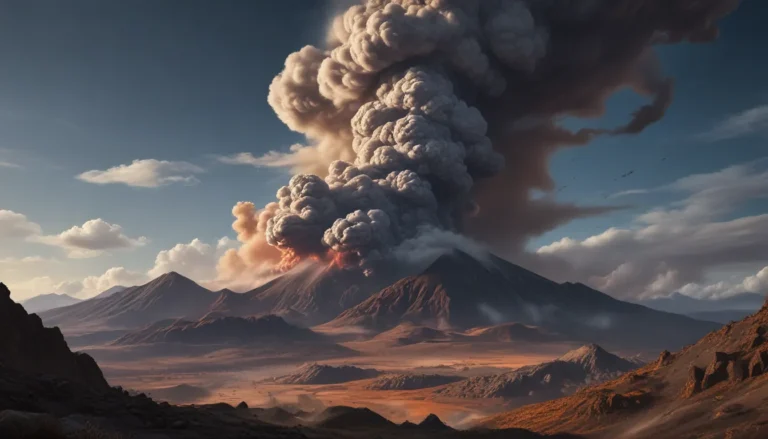A Note About Images: The images used in our articles are for illustration purposes only and may not exactly match the content. They are meant to engage readers, but the text should be relied upon for accurate information.
Geohazards, natural phenomena that can be dangerous to people and the environment, have fascinated humans for centuries. From earthquakes to landslides, these events have shaped our planet and our history. In this article, we will uncover 15 intriguing facts about geohazards, shedding light on their causes, impacts, and the measures taken to mitigate their effects. Join us on a journey through the fascinating world of geohazards, where we will explore the forces that shape our planet and the ways in which they can both awe and devastate. So, buckle up and get ready to uncover the mysteries and marvels of geohazards.
Key Takeaways:
- Geohazards, like earthquakes and landslides, are natural events that can be very dangerous. It’s important to understand them and have plans to stay safe.
- Learning about geohazards helps us prepare for disasters and protect our communities. By studying them, we can make better decisions and keep people safe.
Geohazards: Diverse in Nature
Geohazards encompass a wide range of natural events, from earthquakes and volcanic eruptions to landslides and tsunamis, each with the potential for devastating consequences.
The Dynamic Earth: Culprits Behind Geohazards
Geohazards are a result of the Earth’s constant evolution and the interplay of tectonic, volcanic, and geomorphic processes that shape our planet.
Shaping the Earth: Impact of Geohazards
Over millennia, geohazards have significantly impacted the Earth’s topography, contributing to the formation of mountains, valleys, and other geological features we see today.
Risks to Human Settlements: A Daunting Reality
Urban areas and critical infrastructure are vulnerable to the destructive forces of geohazards, requiring proactive risk management and mitigation strategies to protect lives and property.
Secondary Hazards: The Domino Effect
Geohazards like earthquakes and volcanic eruptions can trigger secondary events such as landslides, liquefaction, and flooding, further compounding the overall impact and devastation.
Preparedness is Key: Understanding Geohazards for Disaster Preparedness
By comprehending the nature and behavior of geohazards, communities and authorities can better prepare for and respond to potential disasters, reducing risks and saving lives.
Early Warning Systems: Monitoring for Safety
Advanced monitoring technologies and early warning systems play a crucial role in mitigating the impact of geohazards by providing timely alerts and vital information to those at risk.
Climate Influence: Geohazards in a Changing Environment
Changes in climate and environmental conditions can influence the frequency and intensity of geohazards, amplifying their potential impact on human populations and infrastructure.
Scientific Insights: Studying Geohazards for Knowledge
Researching geohazards enhances our understanding of Earth’s processes, leading to scientific advancements and insights that help us better comprehend natural phenomena.
Mitigation Strategies: Building Resilience
Mitigating geohazards involves a myriad of strategies, from structural reinforcement and land-use planning to community education and emergency preparedness, aimed at reducing risks and protecting communities.
Societal Impacts: Long-term Consequences
The aftermath of geohazard events can lead to prolonged societal, economic, and environmental repercussions, necessitating sustained recovery efforts and resilience-building measures.
Communication is Key: Essential in Geohazard Management
Clear and timely communication of geohazard-related information is vital for raising awareness, fostering preparedness, and facilitating coordinated responses in times of crisis.
Global Resilience: A Shared Endeavor
Building resilience to geohazards is a global priority, with international cooperation playing a significant role in addressing common challenges and vulnerabilities to protect communities worldwide.
Informed Decision-Making: Empowering Communities
Raising awareness about geohazards empowers individuals, communities, and policymakers to make informed decisions and implement risk-reduction measures to safeguard lives and property.
Geohazards are a diverse mix of natural phenomena that have shaped our planet and continue to pose risks to human societies. Understanding these forces, their impacts, and potential mitigation strategies is crucial for building resilient and prepared communities in the face of these formidable geological phenomena.
Conclusion
In conclusion, geohazards are natural phenomena that can significantly impact the environment and human populations. Understanding the various types, causes, and mitigation strategies for geohazards is crucial for effective disaster preparedness and risk reduction. By delving into the intriguing facts about geohazards, we gain a deeper appreciation for the complex forces at play within the Earth’s dynamic systems. From the awe-inspiring power of volcanic eruptions to the subtle yet profound effects of soil liquefaction, geohazards remind us of the planet’s ever-changing nature. By fostering awareness and knowledge about geohazards, we can work towards building more resilient communities and safeguarding our planet for future generations.
FAQs
What are geohazards?
Geohazards refer to natural processes or phenomena within the Earth’s lithosphere, hydrosphere, atmosphere, and biosphere that have the potential to cause harm or damage to human life, property, infrastructure, and the environment.
How can individuals and communities prepare for geohazards?
Individuals and communities can prepare for geohazards by staying informed about potential risks in their area, developing emergency plans, participating in drills, securing structures, and having emergency kits ready. Working with local authorities and experts to understand the specific geohazards prevalent in their region is crucial for effective preparedness and response.
Was this page helpful?
Our commitment to delivering trustworthy and engaging content is at the heart of what we do. Each fact on our site is contributed by real users like you, bringing a wealth of diverse insights and information. To ensure the highest standards of accuracy and reliability, our dedicated editors meticulously review each submission. This process guarantees that the facts we share are not only fascinating but also credible. Trust in our commitment to quality and authenticity as you explore and learn with us.






